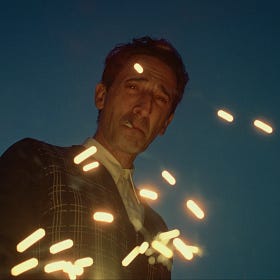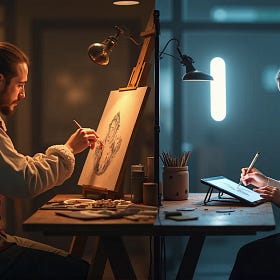The High-Tech Creative is an independent arts and technology journalism and research venture entirely supported by readers like you. The most important assistance you can provide is to recommend us to your friends and help spread the word. If you enjoy our work however and wish to support it continuing (and expanding) more directly, please click through below.
Over the last few years all eyes have turned towards AI for many reasons but few of them have evoked such an emotional response as generative artworks. Adored by some, loathed and despised by others, if the purpose of Art could be said to arouse emotion, Generative Art may be more successful so far than any art form since the invention of the camera.
Love it or hate it, it's hard to argue that the technology is currently revolutionising creativity and here at the start of 2025 the burgeoning AI Art Tools industry is extremely healthy and “growth oriented”.
So what is Generative Art? How does it work? How can I get involved? What are the controversies? This article will serve as your guide and overview as well as the start of our first themed article series. Over the coming weeks we are going to delve deep into Generative Art - the good, the bad and the ugly.
What is Generative AI?
As with text generation AI (ChatGPT et. al.) there are a number of different types of image generation model architectures but by far the most ground-breaking was introduced in 2022 with DALL-E 2 by OpenAI, the Diffusion model. These models can generate art in a variety of styles, generate photorealistic images and even produce abstract and surreal artwork (like those popularised by the eponymous Dali). For the first time these tools have opened up a world of creativity to everyone regardless of technical ability or training; and for those who are artistically trained and skilled they open up an even wider range of technologically enhanced possibilities. Even several years after its introduction this is still early days in the AI art revolution and it is exciting to see the sorts of things traditional artists are attempting with access to these new tools.
How do they work?
The two most common types of art-generating AI models are GAN (Generative Adversarial Networks) models and Diffusion models. In 2025 Diffusion models are by far the more popular of the two and are the architecture used in all of the most popular generation tools. GAN tools are older and though they do still have their uses however they are no longer the leading technology they once were.
GAN models work by essentially loading two separate models, a generator and an evaluator model. These two networks work in tandem with the generator model attempting to "fool" the evaluator into thinking the image it has generated is a real image, whilst the evaluator is judged on its ability to differentiate between real images and the generated ones presented to it. This is an adaption of an "arms race" seen in biological system evolution and with the same final result; each model places pressure on the other to improve. As training progresses and the generator becomes better at fooling the evaluator, the evaluator learns to become better at detecting fakes and each pushes the other to greater heights. These models have been highly successful in some areas of image generation particularly the generation of realistic imagery, and led the field until the invention of Diffusion models. There are some downsides to this process however that have directly led to the preference for Diffusion models: GAN models can train themselves into a position of only generating a few limited varieties of outputs that they know will satisfy the evaluator (mode collapse) restricting its creativity, they are notoriously difficult to train due to the adversarial nature of the training process, and there are limited ways to control what they actually produce. Diffusion models directly address these issues.

A diffusion model, by contrast, is a single model trained on images in a way that would be more familiar to developers of the transformer-based text generation models that have taken the world by storm. Datasets full of images, properly described and tagged, are run in long training runs. The model learns not only to associate the image with the descriptions given but learns what the images look like as gaussian noise is gradually added to them.

The end result of this training process? During generation the model works in reverse (diffusing). Beginning with a picture made entirely of random noise the model iterates over the image processing it in multiple "steps". Each one uses probabilities to change the pixel values of the image much as text generation model use probabilities to pick the next word in a sentence and over multiple iterations it guides the image closer and closer to something that matches the prompt it has been given. This may take 20 or 40 iterations; some specialised "fast" models are able to do it in as few as 4 or even 1.
This process, through the use of a large amount of images in training (the AI art equivalent of the enormous text corpus' used to train generative text models like ChatGPT), is able to produce a huge variety of images in different styles from photorealism to highly stylised. Some examples are shown below.



The current state-of-the-art
A burning question at this point is how do we use them? There are multiple ways but by far the simplest is to make use of one of the commercial generators which are generally set up to be as user friendly as possible and many of which allow limited free-use in order to try them out. It's also possible to run some excellent quality models on your own local hardware; in fact this is the method that gives you the most control over image generation. Setting this up is beyond the scope of this overview but may be covered at a future date; for those of you already technically inclined, I will cover the two most popular open-weight models below.
Cloud-Based Options
Midjourney
Midjourney has fast become the go-to model for images with an artistic flair. If you've seen an AI generated image of an oil painting that made you sit up and exclaim, the odds are good it was a Midjourney generation. Originally something of an oddity in the cloud services world as it only allowed access to its model via prompts entered into a discord chat they have since set up a website that is more user friendly for beginners.
A victim of their own popularity however, Midjourney often finds itself overrun. For that reason its "free trial" is often disabled or only enabled for short periods making it more difficult to try this one out.
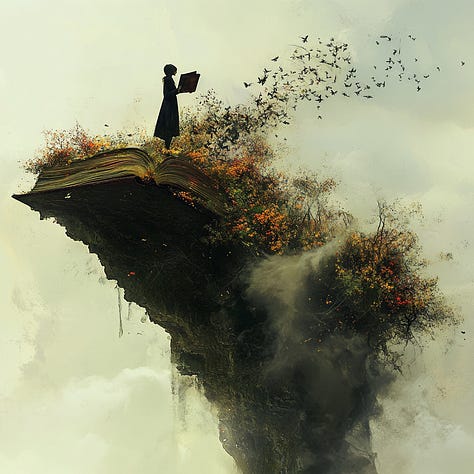
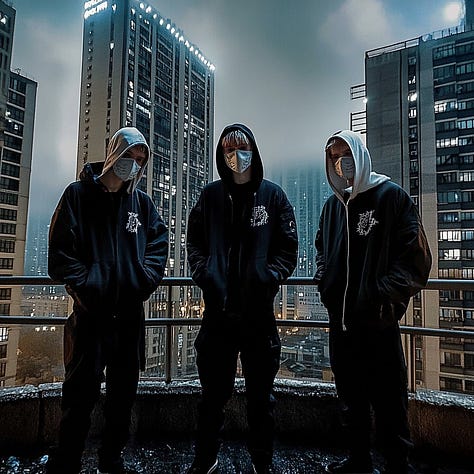

DALL-E 3
The original diffusion model in a new edition and still quite impressive. OpenAI haven't rested on their laurels. Access to this model is available through ChatGPT if you have a ChatGPT plus subscription already or it can be accessed through Microsoft Copilot who also use the OpenAI technology.



Google Imagen
Integrated with its AI chatbot Gemini and also available on Googles "ImageFX" platform, Imagen is known for its remarkable photorealistic images and simple usage. It offers basic functionality for free through Gemini so it's well worth checking out.
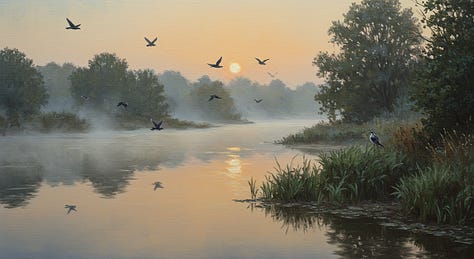
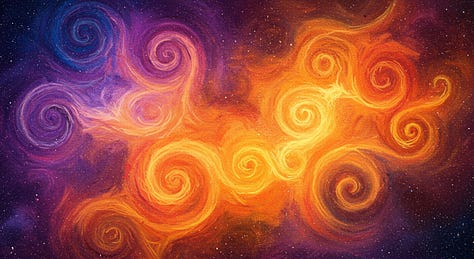
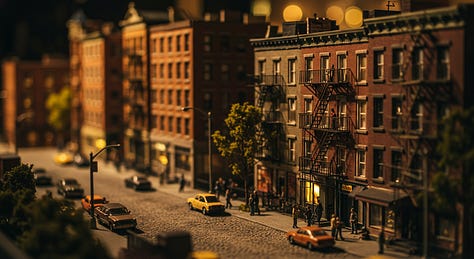
Open-Weight Models
Stable Diffusion
If DALL-E was the first diffusion model that lit the flame, Stable Diffusion was the model that stoked it into an inferno. The first of the open-weight models that could be downloaded and run on local GPU's, Stable Diffusion has fallen out of favour after a lacklustre release in 2024 that put it at odds with its extremely vocal enthusiast community. No longer top of the heap in the open-weight world (that honour belongs to our next model), the SD models are still extremely powerful and available in a huge quantity of different fine-tunes supporting a variety of types of image, far more than was ever imagined by the original model authors.
Stable Diffusion has gone through multiple versions. The core ones in 2025 are:
SD1.5 - An older model now and far less used than it once was however as the early darling of the enthusiast movement SD1.5 was finetuned on thousands of datasets giving it a wide range of specialised models, some still unique in their niche. It can still be worth a look even today, though it is responsible for many of the “AI Horror” warped and strange images that have been showcased over the years.



SDXL - The long reigning favourite of the open-weight community; like SD1.5 there are a wide variety of fine-tunes and extensions allowing for what is likely the widest variety of generation in AI Art so far. Still widely used and worth a look.



SD3 & 3.5 - An unwelcome change of licencing and what was widely seen as a fairly poorly tuned model at launch led to a great deal of embarrassment (and almost sunk Stability.AI as a company) at SD3's initial release. The release was so badly recieved in fact that it was banned from some of the community’s biggest sites (such as Civitai) directly after its launch and for quite some time. Since then however they have walked back the worst aspects of the licence agreement and the 3.5 release has tuned the model into quite a powerful option that has seen some rehabilitation within the community. It is no longer the darling of the open-weight community that it was with the SDXL series however.



Flux.1
The new top-of-the-heap of the open-weight community, Flux was developed by a group of ex-Stability.AI developers who split to form their own company. Their first model, Flux.1, comes in three variations - Pro, which is closed-weight and available only through their own site, Dev - Their standard open-weight model and Schnell - a model tuned to operate fast, on only a few iterations. Thanks to a change in architecture Flux is able to follow prompts much closer, render text much better and is generally just a better model than its predecessors.
The one downside of this is that it is also much larger and thus requires more VRam to run locally than the Stable Diffusion models; however as it is based on the same basic transformer structure as the chat models it can be quantised (optimised to use lower-precision weights) which couldn’t be done successfully with earlier diffusion models. This allows it to be shrunk small enough to run on consumer grade GPU's with minimal quality loss. If you are starting out in local open-weight image generation Flux.1 is a little more complicated to get going, and slower to generate images, but is well worth the effort.



Practical Applications
Generative Art has placed creativity in the hands of everyone and whilst many are happy just with the simple joy of creation, others have looked for ways to apply these tools in a myriad of different ways across both creative and more unexpected industries.
Creative Industries
The first and most obvious use is of course the creative industries; art, design, filmmaking, all have embraced these tools at various levels and have begun to examine what can be done with them in some quite remarkable ways. Adobe has integrated generative art into its creative cloud utilities, allowing "inpainting" and similar effects to be used with ease within already comfortable artist's tools. In the hands of a professional artist this significantly increases efficiency in obtaining exactly the sort of effect they want as quickly as possible. Film-makers are also now discovering the potential here not just in video generation but in streamlining the editing process, adding VFX, and even audio manipulation as discussed previously in my article on the Brutalist. (See below)
A.I. in Film-making
There has been a great deal of controversy this week surrounding the Oscars and, more specifically, The Brutalist; a movie that is currently nominated for 13 awards, the most of any foreign (non-U.S.) film ever. Those nominations are in question now however with many calling for the film's disqualification after people became aware that A.I. was used t…
Gaming
The gaming industry is adopting these technologies perhaps slower than one might expect but also with likely the most excitement. The combination of generative art and generative text capabilities are ripe with promise for the sort of innovative, improvisational entertainment that many in the industry have always dreamed of, but there is still a long way to go to get there. In the meantime many are discovering the potential for efficiencies in art asset generation, from backdrops to entire 3d models for their game engine pipeline; in an industry that had already begun to reembrace the "solo/small indie developer" paradigm, these tools come at exactly the right time to provide the individual creative with the support required to create the game of their dreams.
Marketing and Advertising
Generative images are fast transforming the marketing and advertising space by placing the power of rapid iteration in the hands of marketers, facilitating wide-scale A/B testing and prototyping of innovative campaigns at a pace previously impossible to maintain. As the technology matures, we expect to see generative art and text models used to facilitate an even more "personal" type of personalised advertising, tailored specifically to niche market groups or even the individual person.
Education
AI-generated visuals can provide a great deal of value in educational contexts through creative illustrative materials to help explain complex concepts and enhance learner comprehension. This improves the accessibility and, in particular, the affordability of learning materials for everyone.
Healthcare
In one of the more innovative moves generative art is proving to be a boon within the healthcare field as well. It is used in a number of ways from image reconstruction and enhancement; improving the quality of scans; assisting in medical and patient education, providing additional data to augment training datasets, simulating treatment outcomes and assisting researchers in developing benchmarks measuring problems such as brain atrophy.
Ethical Concerns
We will delve deeper into the ethical concerns surrounding generative art in a later article in this series however we can't present even a brief overview of this field without acknowledging that not everyone has been excited to see the development of this technology. Emotions run hot when the topic of AI generated art is raised.
Ownership and Copyright
Many questions have been asked regarding copyright and ownership over generated art. How much ownership should be granted the AI Artist who provides a generative AI with the prompt? The model designers? Even the artists whose work the models were trained on? This is a complicated and divisive issue. The US Copyright Office has already weighed in with an initial position however which looks as if it will set the frame for initial discussions as other countries continue to debate the topic. We have covered the US Copyright Office decision previously here at The High-Tech Creative and will no doubt return to this question many times before it is settled.
Copyright Ruling on A.I. Generated Art
The US Copyright Office issued guidance this week answering the question as to how the copyright laws should change to take into account the rise of AI generated content. Their answer? It doesn’t need to change at all.
Bias and Representation
While not unique to Generative Art, the technology has introduced new concerns when it comes to systemic bias and under-representation. The models generate art based on how they are trained using existing art which means that any bias or under representation present in that initial dataset will also present in the art generated by the finished model. If a model is trained to represent certain groups in only a small number of situations or stereotypes, this will follow through; and an over-saturation of specific groups will also carry over to the final model.
This is another area where the open-weight models shine as the nature of the models open them up to tinkering by the community. From the moment they are released the enthusiastic community begins to fine-tune the models to add capabilities, including improving representation and diversity where they feel it is lacking (or simply wish to change up the presentation for the work they are attempting to create).
Impact on Human Artists
This is the concern causing the most emotional responses amongst critics of AI generated art. There has been a lot of talk about the potential for the technology to "devalue" human creativity and displace human artists; this latter in particular as many artists have already reported, much as people in other industries have reported as generative AI have found practical implementation, that they have found it harder to make a living. Many niche art areas around design and commissioned art have been early targets of generative AI use leading to a drop in demand for human artists in those spaces and lower price points as competition for the work increases. This displacement is likely to continue to cause problems across all industries as society adapts to what is possible with the advent of these new tools.
Environmental Impact
As with all AI the training and use of these models has a significant environmental cost due to the amount of power required to use them. The inference cost (cost of using) of the models does tend to be lower than textual generation AI's due to the smaller size of the models; many art generation models can be run on consumer grade hardware and require no more power than playing a modern computer game; however even in those cases the cost of initial model training in compute is still very significant. This environmental cost is an ongoing problem for the entire AI industry and we have discussed some of the challenges and consequences previously here at The High-Tech Creative.
The Great Data Centre Gold Rush
Across history there have been many resource booms that have reshaped our world and driven people to extreme, perhaps excess, activity. Gold, Diamonds, South Sea Spices, Oil, Data, and now the latest great resource rush has begun: Compute. Everyone wants it, no-one has enough of it, and if you can get your hands on the means of producing it, it promise…
Misinformation, Disinformation & Reputational Damage: Deepfake News
The ability to generate extremely realistic images, videos and even voices has opened the door to a whole new class of propaganda tools and the ability to hurt and humiliate individuals on a wide scale. Never before has it been so easy to generate realistic and convincing fake imagery and video of real people. This has the potential to super-charge the ongoing culture wars within society, erode trust in media and political leadership as well as between individuals in communities. Research is continuing on better ways to detect AI generated imagery and new laws are required (and being considered) to harshly punish people making use of these technologies to attack or mislead their fellows.
The Future of Generative AI
The future is still very much unwritten for this emerging technology. Whilst some have called for a banning on the technology wholesale and others seek to boycott companies who make use of it in their products, it seems unlikely that a return to the previous status quo will be possible. The technology is too exciting, the possibilities it offers creatives too enticing, and the potential efficiency gains for business too high for that.
In the meantime the technology continues to evolve. The Flux.1 model release showed architectural advances utilising a "multi-prompt" architecture involving different types of encoders in a (apparently successful) attempt to increase the model's ability to understand and follow prompts. We are going to see continued improvements in the models themselves as the model trainers innovate on both training methods and model architectures to improve the ability for artists to control and the ability of models to express a variety of creative techniques.
We should additionally expect to see further integration of these models into broader and more user-friendly products. We have already seen this happening with Adobe's creative cloud integrating their own "firefly" model into their toolsets to allow seamless use of AI generative art capabilities alongside the tools digital artists have been using for many years. As the technology matures we will see this continue to expand out into other industries, perhaps with specialised models tuned for industry-specific goals.
Most of all we should expect to see a continued outpouring of creativity enabled by these tools. We are currently just in the early stages of these new tools but we can look to history as a guide to a possible future. The invention of the camera was initially met with the same mixture of enthusiasm and abhorrence that we can see amongst the artist community today regarding generative art. At the time it was decried as a destroyer of creativity, "mere reproduction" and a barren, soulless medium. Looking up comments made publicly at the time they echo remarkably closely to the same things being said about generative art today (I recommend Baudelaire, a wonderful poet who, it turns out, had some unfortunate opinions of photography).
Over time as technology matured and people experimented, Artists; as is their want; pushed the limits of what photography was capable of. Each new advance in the technology allowed for additional, often unintentional, effects and artists found ways to use them to invent an entirely new artform. Few would argue these days that photography cannot be Art, as they did in the early days, and perhaps we can hope for the same for AI assisted artworks. Artists are already pushing the boundaries of the medium and will no doubt continue to do so. Perhaps in years to come as the unique features of the technology are used to enable artistic creativity, generative artistry will take a place alongside photography as a new artform for the twenty-first century.
Only time will tell but it is going to be exciting finding out! You can expect The High-Tech Creative to be here to act as your guide to the madness navigating the fast-changing world of art and tech!
Thanks for reading, I hope you will continue to join us as the series progresses and we delve deeper into how the technology works, what we can do with it, and whether or not it is ethical to build and use it at all. See you then!
Note on the images:
All images in this article not specifically credited were generated by The High-Tech Creative using consumer grade hardware and local-run open-weight image generation models, with the exception of the cloud-service example images which were generated using their respective services. Some were straight generations, some involved a greater amount of post-processing and editing.
About Us
The High-Tech Creative
Your guide to AI's creative revolution and enduring artistic traditions
Publisher & Editor-in-chief: Nick Bronson
Fashion Correspondent: Trixie Bronson
AI Contributing Editor and Poetess-in-residence: Amy






